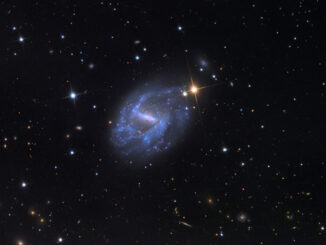
Square of Pegasus

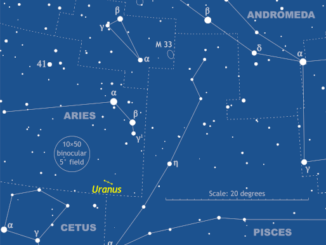
Observe planet Uranus at its best in the autumn sky
Have you ever seen Uranus with the naked eye? If not, moonless nights in late October and November offer ideal conditions to test your visual acuity and sky clarity. Uranus reaches opposition in the constellation of Aries on 28 October 2019 and lies 48° above the southern horizon at midnight as seen from the heart of the British Isles. Here is our guide to tracking down the seventh planet from the Sun.
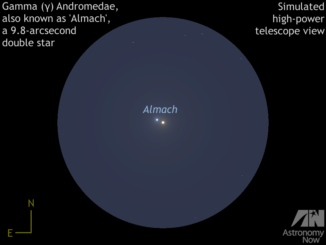
Seeing double in the autumn sky
Now that the season of mists and mellow fruitfulness is upon us and the bright summer stars and planets are slipping away to the west, why not seek out some of the spectacular double stars of the autumn sky? We show you how to find some celestial gems suitable for small to medium telescopes in the constellations of Aquarius, Aries and Andromeda.

Star-hop your way to viewing planets Uranus and Neptune at their best
Clear nights of early Northern Hemisphere autumn offer ideal opportunities to track down the two outermost planets of the solar system, Uranus and Neptune. What’s more, you don’t need a big telescope to find them. We show you how to locate these gas giants using binoculars. The Moon also passes close to Neptune on 20 October.
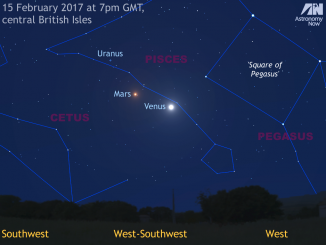
See planet Venus hit peak brightness in the evening sky
Currently setting over four hours after the Sun as seen from the heart of the UK and visible in the west-southwest at dusk, dazzling Venus is about to hit peak brightness in the constellation of Pisces. The planet attains magnitude -4.8 on Friday 17 February — some 21 times the luminosity of brightest star Sirius gracing the southeast horizon as darkness falls.

How to find Ceres, the nearest and brightest dwarf planet at its best
Ceres, the largest minor planet inside the orbit of Neptune, passed closest to Earth on the evening of 22 October — the night of the last quarter Moon. With the lunar crescent now confined to the morning sky, grab your binoculars or telescope, print out some star charts from our online guide and track down the brightest of the dwarf planets while at its best.
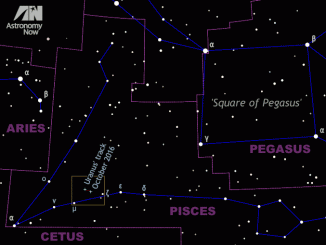
See planet Uranus at its best in the autumn sky
Have you ever seen Uranus with the naked eye? If not, moonless nights in October offer ideal conditions to test your visual acuity and sky clarity. Uranus reaches opposition on 15 October and attains a respectable altitude in the southern sky as seen from the British Isles. Here is our guide to tracking down the seventh planet from the Sun.

